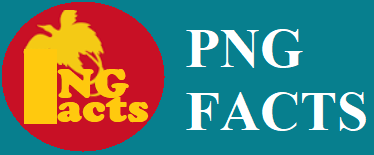Overview of Papua New Guinea
Papua New Guinea is an island nation in the South Pacific, with a somewhat troubled past due to ethnic, economic, and political contention (Boeha & Robins, 2000). The eastern half of the island of New Guinea, the second largest in the world, was divided between Germany (north) and the UK (south) in 1885. The latter area was transferred to Australia in 1902, which occupied the northern portion during World War I and
continued to administer the combined areas until independence in 1975. A nine-year secessionist revolt on the island of Bougainville, which erupted as a result of claims for environmental damage by the giant CRA Bougainville copper mine ended in 1997 after claiming some 20,000 lives (Boeha & Robins, 2000). PNG is richly endowed with natural resources, but exploration has been hampered by rugged terrain and the high cost of developing an infrastructure. Agriculture provides a subsistence livelihood for 85% of the population. Mineral deposits, including oil, gas, copper, nickel, and gold account for nearly two-thirds of export earnings. The economy has improved over the past three years because of high commodity prices and a stabilised political party system following a prolonged period of instability (Post Courier, 2005). PNG became an independent nation from Australia on the 16th of September, 1975. At the same time the PNG education system is essentially imported from colonial times, particularly from the British and later the Australian education system as the country’s colonial masters (Waiko, 1997). Since then PNG has gone through successive stages of educational change whereby the education reform that began as a direct result of ‘The Education Sector Study’ in 1991, is one major educational initiative of the PNG government (Department of Education, 2002a). |
|
Papua New Guinea Education System
Papua New Guinea has an education system which emanates from the British and Australian education systems as the country’s colonial masters (Pau, 1993; Waiko, 1997). According to recorded history, the education system in PNG went through several successive stages of change (Watson, 1982; Weeks & Guthrie, 1984). These stages include the: conversion stage (1880s-1940s), dualism stage (1940s-1960s), expansion
stage (1960s-1970s), nationalism stage (1970s), decentralisation stage (late 1970s and early 1980s). The late 1980s and early 1990s and beyond can be called the education reformation stage (Department of Education, 2002a; Pau, 1993; Rombo, 2003). According to Pau (1993), the conversion stage was the period when the indigenous Papua New Guineans were converted to Christianity from their traditional lifestyles through the work of the early missionaries. The dualism stage was when the colonial government established and operated schools alongside the missions, but the curriculum was based on the mission philosophy. The expansion stage was the period when many schools were
built with the main purpose of manpower preparation for the would-be independent nation before the country got independence in 1975. This was followed by the nationalism stage when the church and government established partnership to run the schools that they had built. The idea of localisation also began to take effect during this period (Watson, 1982). The decentralisation period was the time when certain functions
of the central National Department of Education (NDOE) such as the operation functions of primary schools, high schools, vocational and technical schools were transferred to each of the 20 provinces in PNG (Pau, 1993; Weeks & Guthrie, 1984). The latest, the
education reformation stage was initiated with the main purpose of establishing relevant education for all Papua New Guineans based on the Philosophy of Education for Papua New Guinea (Department of Education, 2002a; Matane, 1986) Along with the structural reform in the education system, curriculum changes also occurred and one of the most notable being the Curriculum Reform Implementation Project (CRIP) (Department of Education, 2002a). The main purpose of this curriculum reform was to develop and implement relevant
curriculum that would meet the needs of all Papua New Guineans from ‘prep’ (early childhood) to grade eight. This was an ongoing project even during the time of the current study.
stage (1960s-1970s), nationalism stage (1970s), decentralisation stage (late 1970s and early 1980s). The late 1980s and early 1990s and beyond can be called the education reformation stage (Department of Education, 2002a; Pau, 1993; Rombo, 2003). According to Pau (1993), the conversion stage was the period when the indigenous Papua New Guineans were converted to Christianity from their traditional lifestyles through the work of the early missionaries. The dualism stage was when the colonial government established and operated schools alongside the missions, but the curriculum was based on the mission philosophy. The expansion stage was the period when many schools were
built with the main purpose of manpower preparation for the would-be independent nation before the country got independence in 1975. This was followed by the nationalism stage when the church and government established partnership to run the schools that they had built. The idea of localisation also began to take effect during this period (Watson, 1982). The decentralisation period was the time when certain functions
of the central National Department of Education (NDOE) such as the operation functions of primary schools, high schools, vocational and technical schools were transferred to each of the 20 provinces in PNG (Pau, 1993; Weeks & Guthrie, 1984). The latest, the
education reformation stage was initiated with the main purpose of establishing relevant education for all Papua New Guineans based on the Philosophy of Education for Papua New Guinea (Department of Education, 2002a; Matane, 1986) Along with the structural reform in the education system, curriculum changes also occurred and one of the most notable being the Curriculum Reform Implementation Project (CRIP) (Department of Education, 2002a). The main purpose of this curriculum reform was to develop and implement relevant
curriculum that would meet the needs of all Papua New Guineans from ‘prep’ (early childhood) to grade eight. This was an ongoing project even during the time of the current study.
